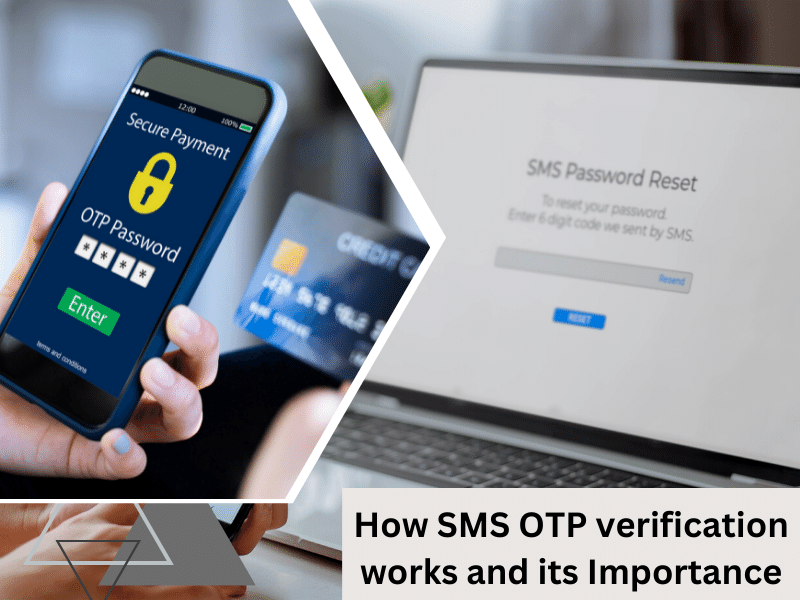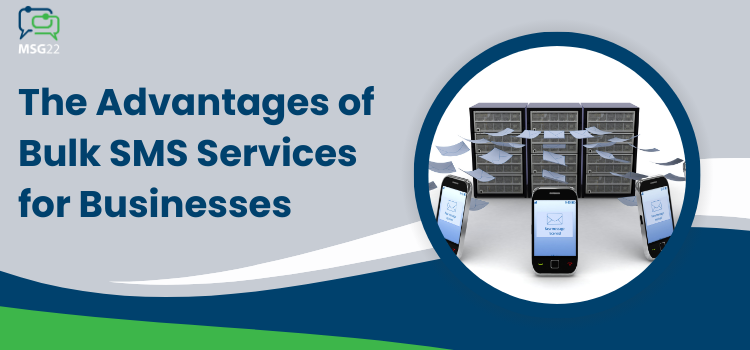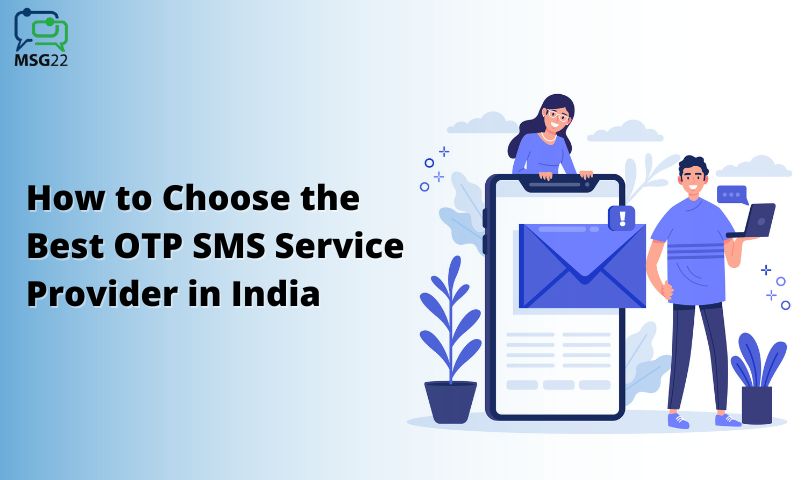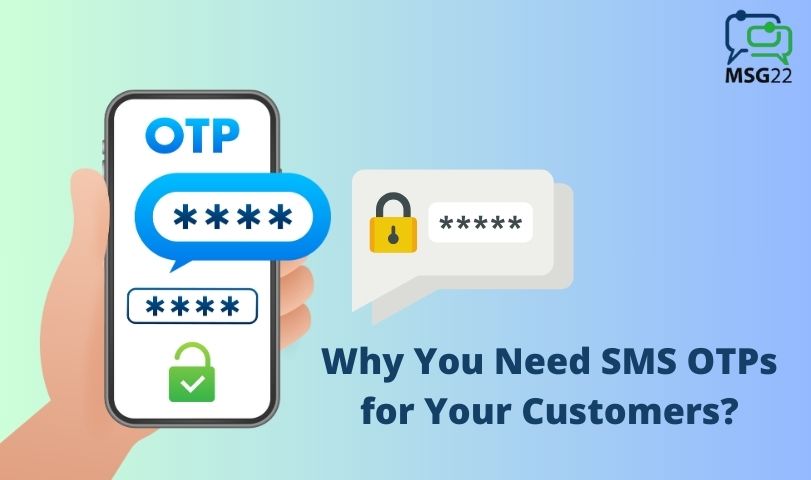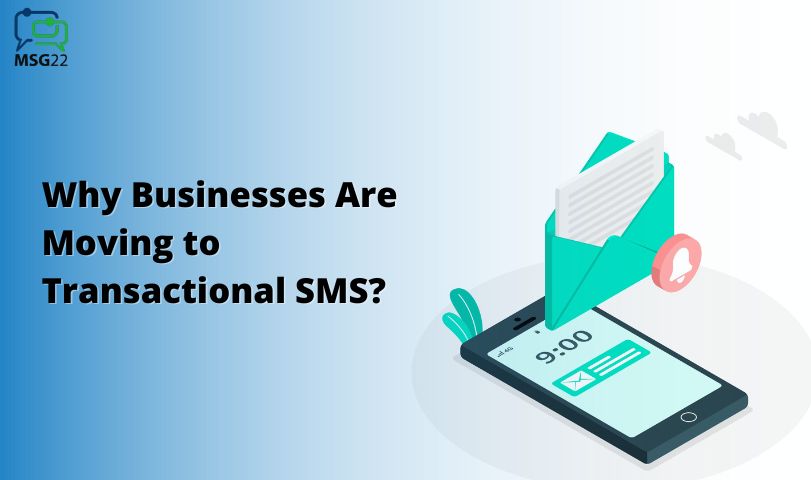Businesses send a one-time password (OTP) via SMS text to the user’s phone as part of the SMS OTP verification process. On the authentication device, the user enters the OTP that is sent to them by the company. The OTP has a limited time window for use. OTPs sent via text message provide security from phishing and other harmful attacks. In addition to other security measures like passwords, SMS OTP should be used.
What is SMS OTP verification?
An OTP, or one-time password, is sent via SMS to a user’s registered mobile number as a temporary authentication code. Every time a user logs into an application or completes an online transaction, the system will automatically generate and send an OTP. Before entering the correct OTP within the allotted time period, users will not be able to log in or perform transactions. This prevents unauthorized use or fraudulent transactions from occurring.
What is a one time password?
A randomly generated string of letters or numbers known as an “one-time password” (OTP) is used to authenticate users for a single login or transaction. A static password, especially one that was made by the user and might be unreliable or used on multiple accounts, is less secure than an OTP. To add an additional layer of security, OTPs can be used in place of or in addition to authentication login information.
OTP security tokens are small keychains or microprocessor-based smart cards that produce a code to validate a user’s identity or a transaction. This secret code is altered every 30 or 60 seconds depending on how the token is configured. Mobile applications like Google Authenticator that support two-step verification rely on the token device and PIN to create the one-time password. OTP security tokens can be implemented using hardware, software, or on-demand services. Contrary to conventional passwords, which are static or expire every 30 to 60 days, one-time passwords are only used for a single transaction or login session.
How do SMS OTP verification numbers work?
A virtual, 10-digit phone number hosted in the cloud that allows you to text users is known as an SMS verification number. In order for your customers to instantly recognize your messages, you can mask the 10-digit number with a sender ID that reflects your brand name from a reliable SMS verification number provider.
The following describes how the SMS OTP verification numbers function and work:
- Customer asks for confirmation : The user taps the “verify” button on your website or app. This could also be “confirm with OTP” or “login with OTP,” depending on the purpose of the customer’s authentication. Then, by means of your backend system, the OTP is produced.
- The verification is carried out by the OTP SMS service provider, which sends an SMS to the registered mobile number of your customer after retrieving the generated OTP.
- The moment your customer enters the unique OTP sent by Exotel on your app or website, they are immediately verified as the number has been validated.
What is the purpose of an SMS OTP verification?
Two common methods for user identification are temporary codes and one-time passwords. The following justifications underpin the SMS OTP verification:
- Minimize friction
By using SMS OTP verification, password-free logins can be provided, saving users from having to keep track of their passwords. The system will immediately send a code to enable access after receiving registration confirmation.
- User data verification
Additionally, they can be applied to lead qualification flows to assess the usefulness and accuracy of the contacts in your database or confirm their legitimacy.
- Preventing fraud
To link emails to phone numbers and stop fraud, you can use temporary codes in coupon campaigns. This will prevent the same person from taking advantage of a discount using multiple email addresses.
- Enhance security
During multi-factor authentication processes, the user is prompted for information like their email address and password before being sent a temporary code to complete a second identity verification.
How do I pick the SMS verification number?
You can pick the SMS verification number in the following ways:
- Make sure to check the truecaller number
In India, Truecaller’s spam-detection users number 100 million. Make sure your SMS verification number can be verified by Truecaller.
- Verify delivery fees
Always enable secure transactions or identity authentication for your customers. Choose a supplier that offers excellent delivery, scalability, and uptime.
- Verify compliance
Select an SMS verification number that complies with TRAI guidelines and DLT template scrub to ensure OTP delivery.
- Ensure real time visibility
After you’ve sent SMS OTPs, evaluate how well they worked. Look at the delivery, open, and click rates for this. Performance might be improved with this knowledge. If your reports show that a sizable portion of your customers repeatedly request an OTP, you might want to think about lengthening the expiration period on the initial OTP message sent to them.
- Choose a brand related SMS verification number
Customers expect prompt notification of message senders. The 10-digit number of the sender is replaced by the sender ID. Select a service that can give you a sender ID with six characters.
Why is SMS the most effective OTP verification method?
SMS is an easy-to-use authentication technique. Most people have a smartphone. SMS is cost-free and simple to use. Additionally, bulk SMS benefits businesses in many ways.
- Increased delivery rates
It is certain that you will receive the codes when using SMS OTP verification.
- low latency
The SMS OTP verification process is quick. Delivery is anticipated to take, on average, between 3 and 8 seconds.
- Increased reading rates
Compared to emails and app notifications, SMS messages are read more frequently.
- Security
Since the company sends SMS OTPs to the user’s registered mobile number, they are temporary, unlike passwords, protecting users from future abuse.
What purposes does SMS OTP verification serve in the business world?
SMS verification is frequently used in the financial sector because the RBI mandates two-factor authentication (2FA) for all online card transactions. However, there are numerous ways that businesses use SMS and OTP verification. Here are some methods:
- Authorization
Access security is essential when using secure websites or mobile applications from a device, location, or IP address that is not known. This goes beyond financial transactions. Because SMS verification is a quick and secure way to confirm the user, many online banking services have made OTPs a requirement as part of their 2FA requirement.
- No password login
It can be difficult for users to remember passwords for various websites and services. With SMS verification, you can log in without a password. OTPs are frequently used by customers who don’t want to use a password to log in.
- Password reset
A password is required to log into a platform, which is crucial for preventing unauthorized access and ensuring that only the account owner may change the password. SMS verifies user identity for business purposes. Users who request a password reset may first get an OTP as identification.
- New signups
Through their websites, businesses frequently get fake sign-ups or unreliable mobile numbers. By requiring OTPs during registration, it wastes time and resources by building up a large database of unreachable customers and their companies. The accuracy and use of the user’s mobile number can be ensured by verifying it.
- Activation of an account
OTPs can also be used to stop account reactivation fraud and fraudulent password resets. Thieves occasionally attempt to fraudulently reactivate inactive accounts after a long period of inactivity. Businesses also send marketing messages to inactive users to encourage them to reactivate. However, OTP verification is a useful method, and authentication is crucial.
- Delivery and order confirmation
Additional security is required at the customer’s doorstep for the delivery of some items, including credit cards, return pick-ups, and high-value orders. OTPs are an excellent way to immediately verify that the order was delivered to or picked up by the correct person.
- Verification of transactions
For all types of transactions, including online purchases, recurring payments, credit card bills, and others, SMS verification is the best option. Businesses SMS the cardholder with an OTP to verify their identity.
How can the OTP service protect your business transactions?
For their online digital activities, businesses use the internet platforms of websites, applications, and software. Anyone who uses the internet can access these platforms by using the appropriate URL. However, the password used to protect account access is insufficient to completely secure it. Every year, the number of cyberattacks, data breaches, password thefts, and other crimes significantly rises.
It is impossible and extremely unlikely for a password to be stolen after encryption has been compromised, claims Verizon’s “Data Breach Investigation Report.” In more than 81% of hacking incidents and data breaches, weak or stolen passwords were a contributing factor. According to the report, there were 6300 cyber incidents, 1300 data breaches, and more than 50 organizations spread across 95 countries.
The OTP SMS service can protect your business transactions in the following ways:
- Prevent password based attack
User-generated passwords can be easily deciphered. Cybercriminals find it easier to carry out security attacks like dictionary attacks, brute force attacks, and password sniffing. The use of mathematical techniques to crack passwords is prohibited by OTP services.
- A few minutes of password validity
Data security for businesses and consumers is harmed by using the same password for numerous transactions. One-time passwords can only be used once per transaction and are known as transaction SMS.
- Securely send important information
OTPs can be delivered to a mobile number via voice call, email, or text message. In order to increase the security of the registration process, it sends the code to both an email address and a mobile number.
- Verify business transactions
Because of OTP services, dynamic passwords have taken the place of static ones. Businesses use this service to safeguard digital payments, account activation, account cancellation, and password resets, as well as eCommerce purchases. Businesses use the OTPs’ difficult-to-crack feature to safeguard digital transactions and customer information.
- Implement two factor authentication
Two-factor authentication protects various business transactions by substituting one-time passwords for user-generated ones. A one-time secret key (OTP) is sent to a customer’s registered mobile number as part of the security method, allowing your business to cross-verify its identity.
- Overcome static password and PIN limitations
To transact financially and send sensitive information, the majority of customers use static passwords and PINs. They frequently miss the mark when it comes to making passwords that are hard to guess. When the same password is utilized for numerous login sessions or transactions, sensitive information and financial transactions are more vulnerable to targeted security attacks.
- Choose from many OTP generation approaches
OTP providers use sophisticated algorithms to create passwords. Using alphanumeric and numeric patterns, the technique makes it difficult to guess the password. Some companies even give businesses a choice of OTP generation methods. A time-synchronization-based strategy can be used to set a time after which the dynamic password will expire. In a similar vein, depending on the prior OTPs sent to the user, different algorithms may be used to create the password. Additionally, you can activate OTPs based on specific circumstances thanks to the sophisticated algorithms.
What benefits does SMS OTP verification offer?
OTP SMS verification offers the following benefits:
- Easy to use
Users will become frustrated by difficult authentications. In this situation, SMS authentication offers a quick and secure solution.
- Low cost
The low cost of sending SMS to customers is very advantageous for a company with a large customer base.
- an added layer of protection
These days, user accounts are protected by two-factor authentication. An additional security measure is provided by straightforward SMS authentication. It is preferable not to conduct any additional security checks.
How do I pick an SMS OTP verification service?
You must have understood how crucial SMS OTP verification is. Keeping this in mind, you must recognize the importance of having good OTP SMS services for this. Good services ensure the protection, safety, and security of your business. You must keep the following points in mind whenever you are picking the OTP SMS service:
- Security
Messages sent by users must be secure. Otherwise, hackers could eavesdrop on unprotected communications and log into users’ accounts. Select an SMS OTP verification service that offers superior security.
- Excellent support
You require an SMS service provider who can react quickly in the event of an issue.
- Flexible APIs
If you’re using APIs to create an OTP authentication system, make sure your supplier’s APIs are flexible and easy to integrate with your backend systems.
- Scalability
Always go with an SMS verification service that has the ability to scale up and down quickly to meet your business’s needs.
- Rapid delivery
Users must enter one-time passcodes before they expire because they frequently have time restrictions. If you send thousands of SMS 2-factor authentication messages to clients, you need a large-scale verification solution that can handle a high volume without sacrificing performance.

